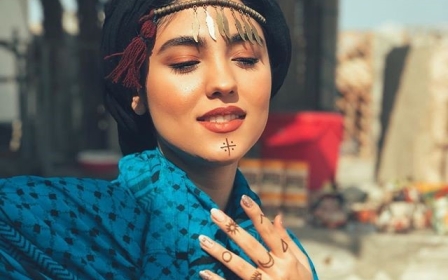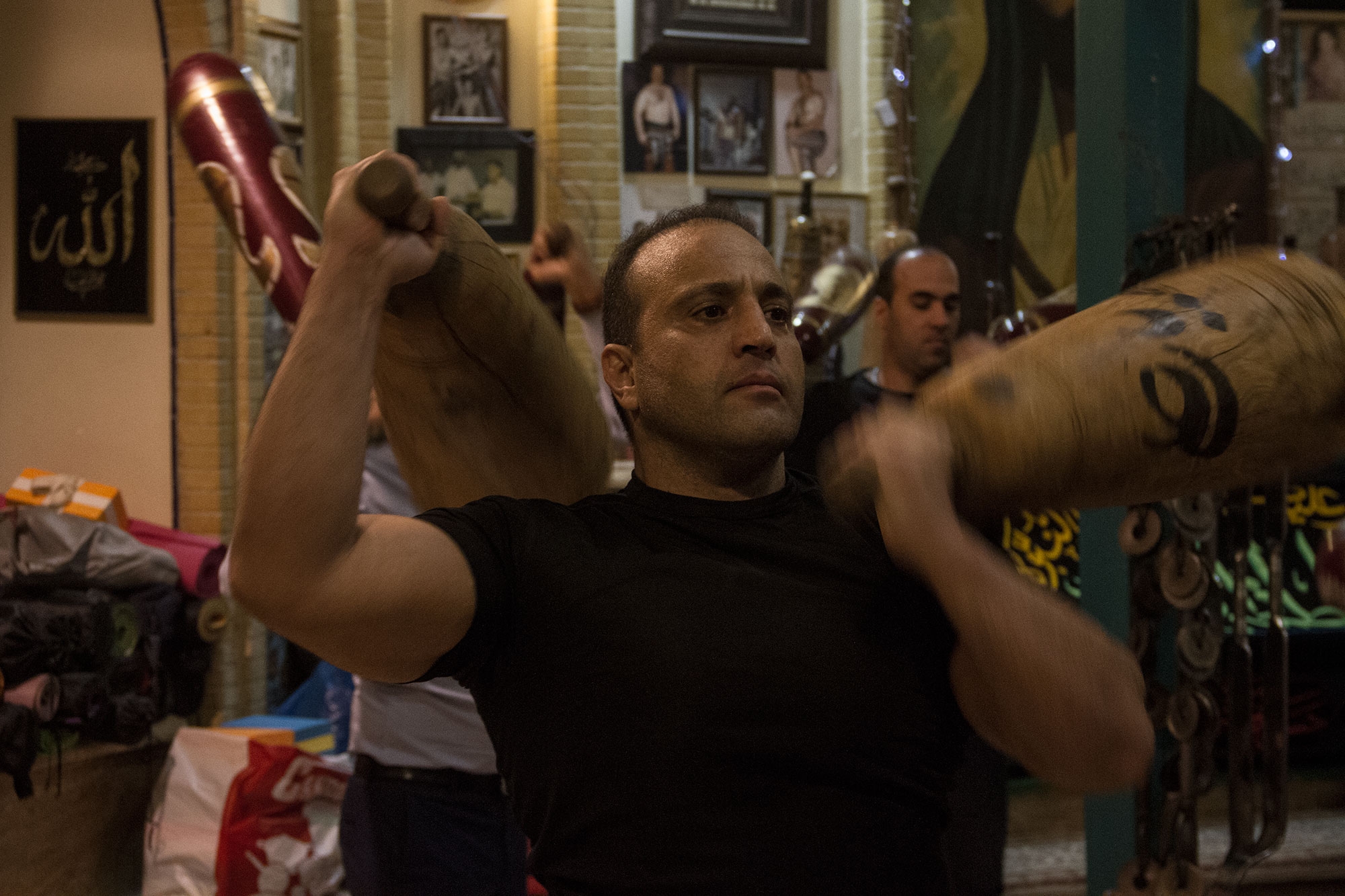
Varzesh Baastani: The ancient Persian sport influenced by Sufism

Varzesh Baastani means "the ancient sport" and is rooted in Iran’s pre-Islamic culture, although today it has taken on influences from Shia Islam and Sufism. The sport is played out in a zourkhaneh, which means "house of power", and audiences are welcomed into the venue with cups of sweet tea. Those present are expected to watch the performance in silence unless the morshed (master) asks them to praise the Prophet Muhammad. (All pictures by Manely Faani.)
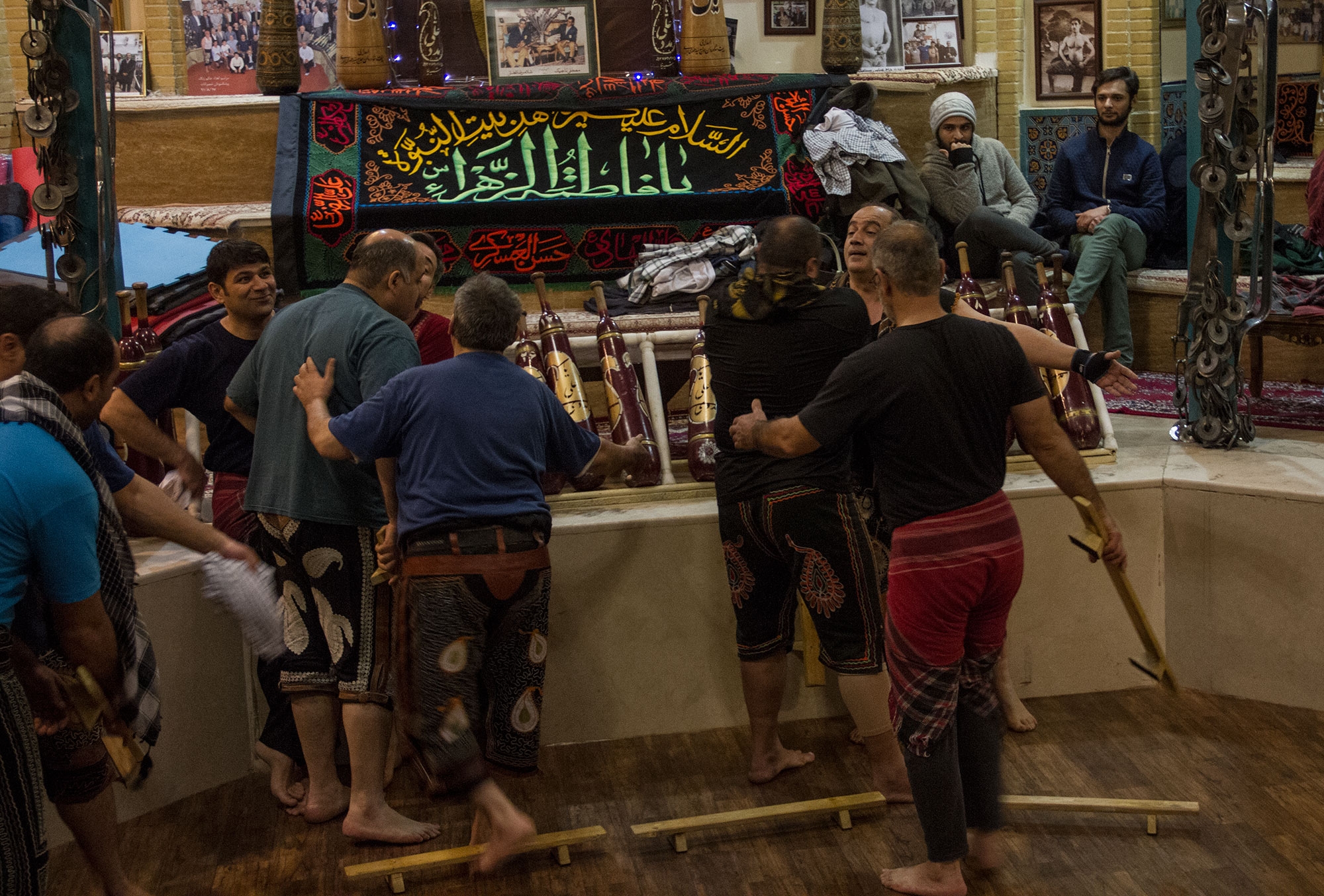
Varzesh Baastani is performed in a ring called a gowd and begins with a ritual where younger athletes pay respect to older ones. The older participants take up a position close to the morshed and invite less senior ones to them. More of a ritual exercise than a competitive sport, the performance involves moving with the rhythm of the morshed's songs and music, and collectively performing exercises with a variety of weighted weapons.

The morshed is the most important person inside the zourkhaneh, and serves as a mix between a conductor and master of ceremonies. He takes up a position on a platform placed higher than the ring and initiates movements by playing specific songs. Alongside songs associated with each movement, he also sings lines from Persian poets, such as Ferdowsi, Hafez, Saadi and Rumi, focusing on verses that extol virtuous behaviour.

Athletes kneel while the morshed performs the introductory song. The exact origins of the sport are unknown but researchers date it to rituals practised during the Parthian Empire, which ruled Iran between 247 BCE and 224 CE. It is said that the main aim of the practice was to keep Iranian warriors physically and mentally prepared for the battle.
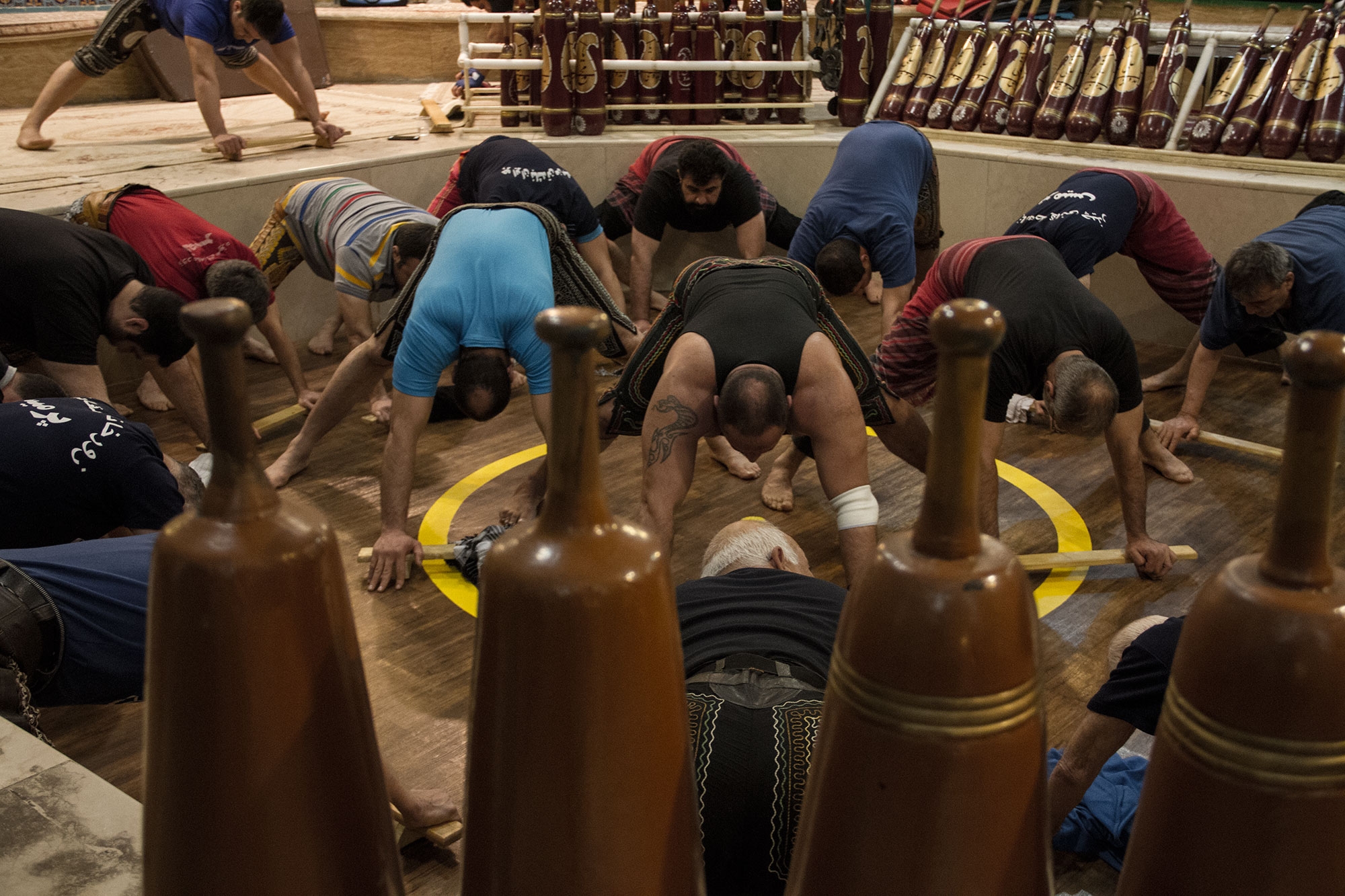
A form of the push-up exercise is used to warm up before the main performance begins. The athletes carry out the exercise collectively and match their movements to a rhythm set by the morshed's choice of song. Unlike standard push-ups, the ones practised in Varzesh Baastani contain twists and require the athlete to get as close to the ground as possible and maintain the position for a few seconds. Historians say that this was an exercise with a military origin, as warriors needed to act as stealthily as possible when approaching the enemy.

Charkh Zadan means "whirling" and is perhaps an indication of Sufi influence on the sport, however in Varzesh Baastani, the participants move much faster. As they spin, the athletes also move around the gowd. Again, this practice is thought to have a military origin, and is believed to be a move of last resort when a warrior is surrounded by the enemy.
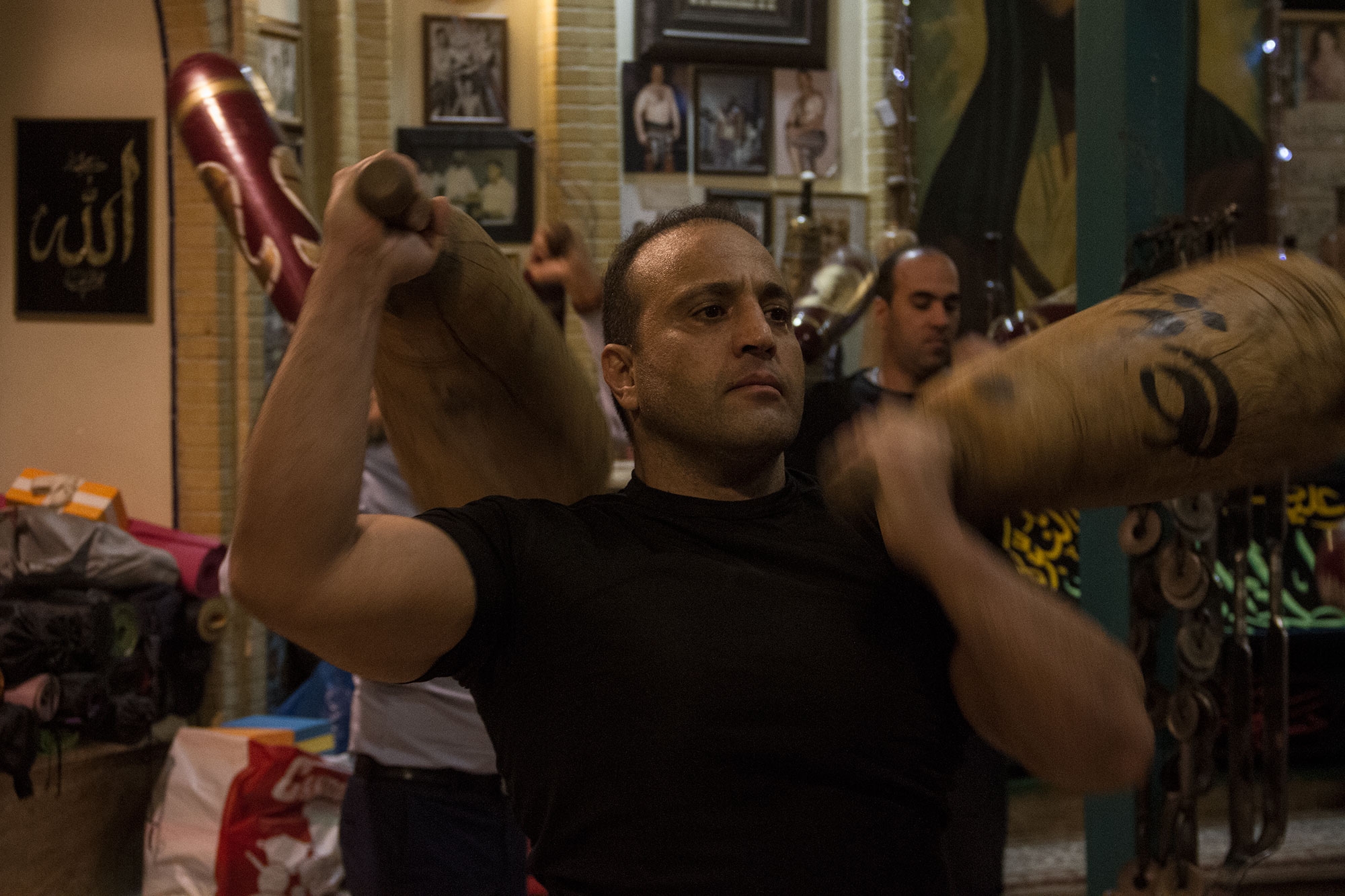
Mil-giri is a collective move, in which each athlete holds two wooden clubs, called mil. The size and weight of mil depends on each person’s strength and power. In normal mil-giri, the athlete holds both out in front of his chest, then raises them up and brings them down behind his back.

While participants perform inside the gowd, others can train silently within the zourkhaneh. In this photo, an athlete trains with sang, which resemble the shields used by ancient armies. The Farsi writing on each sang reads “Ya Ali”, an invocation to the first Imam of Shia Islam, Ali ibn Abi Talib. The drawings underneath the writing is of Rostam, a mythical hero who fought demons in pre-Islamic Persian legend.
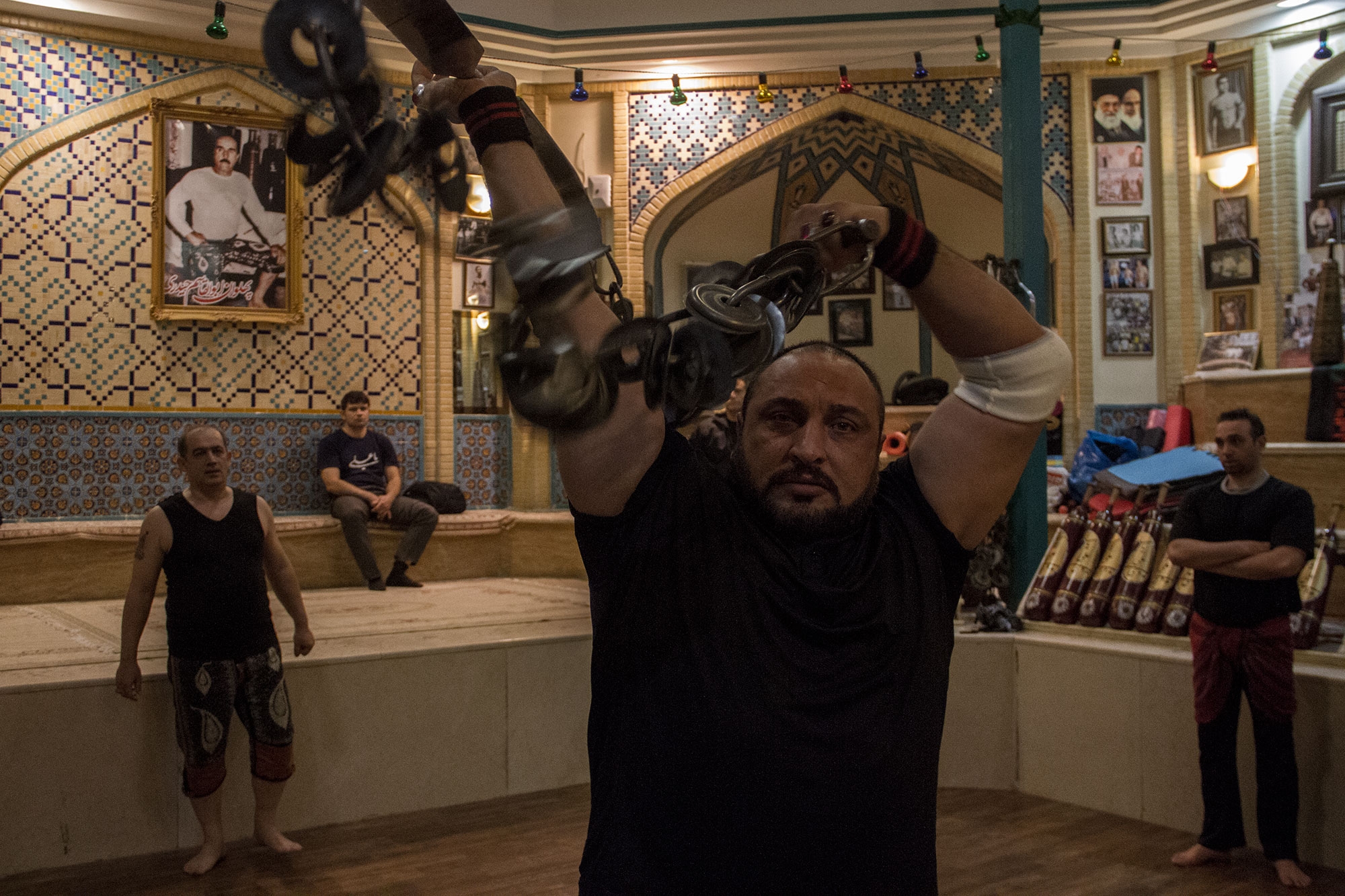
A kabadeh resembles a bow and can weigh as much as 110 kilograms. Like many of the pieces of equipment used in Varzesh Baastani, its use in the ritual has a military origin.
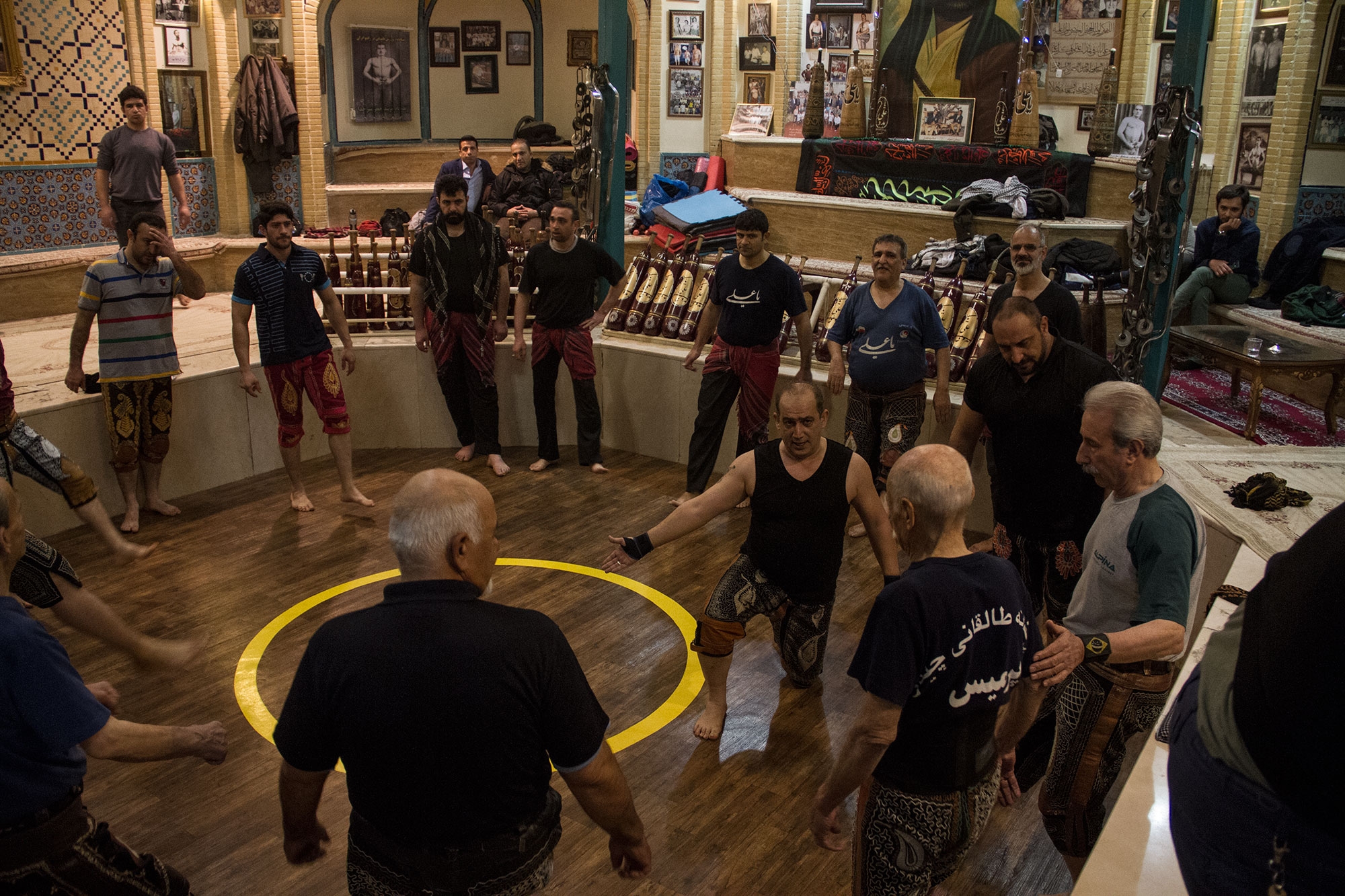
At the end of the performance, the oldest person in the ring speaks to his fellow athletes, imparting advice on moral and social issues, and the importance of doing good by others.

Members of the zourkhaneh pose for a picture. Both Zoroastrianism, which influenced the sport's early development, and Islam, which arrived in Iran in the 7th century, place an importance on developing physical, as well as spiritual strength.

The wall of memories, inside a zourkhaneh in Tehran, is covered with photos of national champions of Varzesh Baastani and photos of the club's founders.
This article is available in French on Middle East Eye French edition.
Middle East Eye delivers independent and unrivalled coverage and analysis of the Middle East, North Africa and beyond. To learn more about republishing this content and the associated fees, please fill out this form. More about MEE can be found here.



